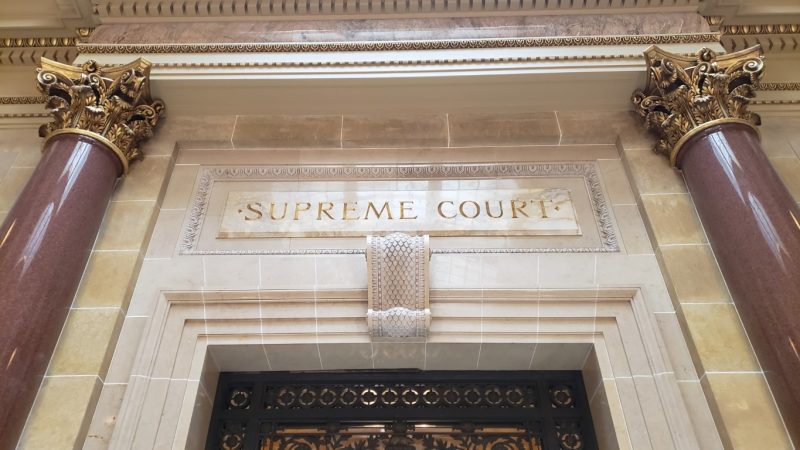The state Supreme Court today delivered a win for Dems in picking Gov. Tony Evers’ congressional and legislative boundaries.
Even so, the new lines — if they withstand an appeal — would still leave Dems fighting an uphill battle to take the majority in the Assembly or Senate.
Writing for a 4-3 majority, Justice Brian Hagedorn wrote Evers’ maps most closely followed the court’s November directive to take a “least-change” approach to the existing lines Republicans drew a decade ago.
Evers’ maps include five congressional districts that have typically voted Republican in recent elections and three Dem seats.
>> WisPolitics is now on the State Affairs network. Get custom keyword notifications, bill tracking and all WisPolitics content. Get the app or access via desktop.
Under the existing lines, former President Trump won six districts in 2020.
The guv’s Assembly map includes 55 GOP seats and 44 Dem districts, while Trump won 62 of the existing seats in 2020.
And Evers’ Senate map includes 20 GOP seats and 13 Dem districts. Trump won 22 seats under the current maps in 2020.
By comparison, the map GOP lawmakers submitted to the court included: six congressional seats that Trump would’ve won had they been in place for the 2020 election, 22 state Senate districts and 64 Assembly seats.
Evers’ map also pairs three sets of GOP lawmakers: Sens. Alberta Darling, of River Hills, and Dale Kooyenga, of Brookfield; and Reps. Chuck Wichgers, of Muskego, and Cody Horlacher, of Mukwonago; and Dan Knodl, of Germantown, and Barb Dittrich, of Oconomowoc.
Writing for the majority, Hagedorn wrote that Evers’ map “easily scores highest” in complying with the court’s requirement that new lines follow the least-change approach.
He wrote the same about Evers’ legislative maps.
“No other proposal comes close,” Hagedorn wrote.
Hagedorn was joined in the majority by the court’s three liberals: Ann Walsh Bradley, Rebecca Dallett and Jill Karofsky.
Conservative justices Annette Ziegler, Pat Roggensack and Rebecca Bradley each wrote dissenting opinions.
Ziegler, the court’s chief justice, slammed the majority ruling as “a complete lack of regard for the Wisconsin Constitution and the Equal Protection Clause,” adding it “amounts to nothing more than an imposition of judicial will.”
Roggensack wrote that by adopting Evers’ map, the court’s majority had engaged in racial gerrymandering and hoped the U.S. Supreme Court will be asked to “review Wisconsin’s
unwarranted racial gerrymander, which clearly does not survive strict scrutiny.”


